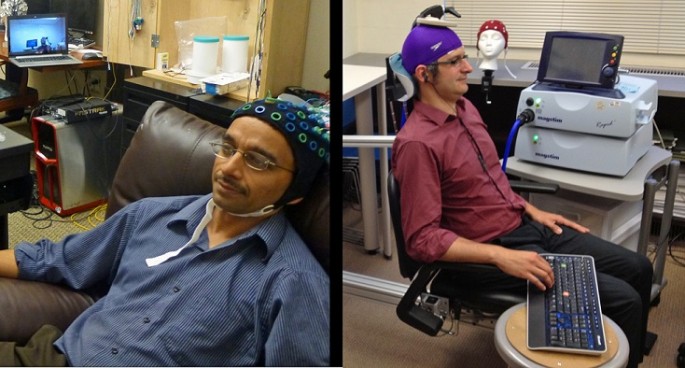University of Washington (UW) scientists have made science fiction a reality by developing a complex device that creates a "telepathic" brain-to-brain (B2B) connection through the Internet. Although the mind link took hours to produce what would usually take a few minutes in spoken words, the breakthrough in cognitive science could one day allow people with brain damage to communicate non-verbally without using words or sign language.
Findings of the 2014 experiment were published in PLOS ONE. It is the first one showing that two brains can communicate directly by one person correctly guessing what the other person is thinking.
The experiment included five pairs of volunteers. It took place in two UW laboratories nearly one mile (1.6 kilometers) apart.
Participants played 20 rounds of a question and answer (Q&A) game that included 8 objects and 3 questions to solve it. Each experiment session included a random mix of 10 real and 10 control games.
In one session the first volunteer "respondent" wore a cap linked to a brain wave-reading electroencephalography (EEG) machine. He or she is shown an image of an object on a CPU screen.
The second participant "inquirer" sees a list of objects and related questions, and clicks a mouse to send a question. Then the respondent gives a "yes" or" no" answer by focusing on one of two flickering light-emitting diode (LED) lights.
Lead author Andrea Stocco is an assistant professor at UW's Institute for Learning & Brain Sciences. She said that their experiment was likely the all-time most sophisticated B2B experiment, according to Nature World Report. UW computer and brain scientists described it as a basic video game.
A person wearing an EEG cap can only send a few data bits per minute. That is due to the super-high focus needed to change a brain waves' shape.
The study builds on the UW team's 2013 experiment, which was the first B2B link between humans. Similar lab tests had included rats and monkeys.
B2B interfaces could help brain-damaged patients to communicate using their answers to yes-no questions, by linking them to a tree of words, pictures, and ideas, according to Gizmodo. Another application could be attention deficit hyperactivity disorder (ADHD) treatments.
This video shows the 2013 Washington University brain-to-brain communication experiment:



























